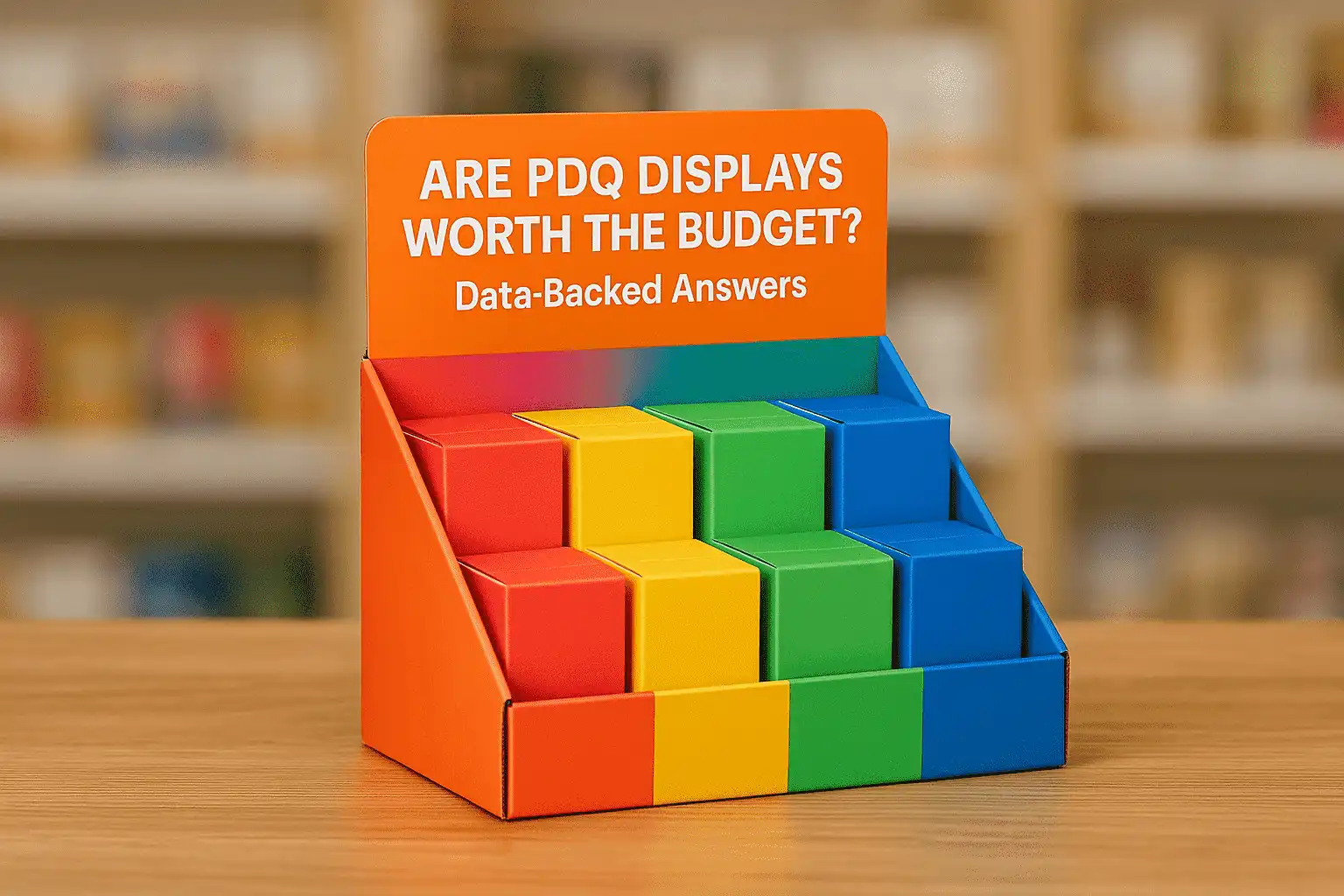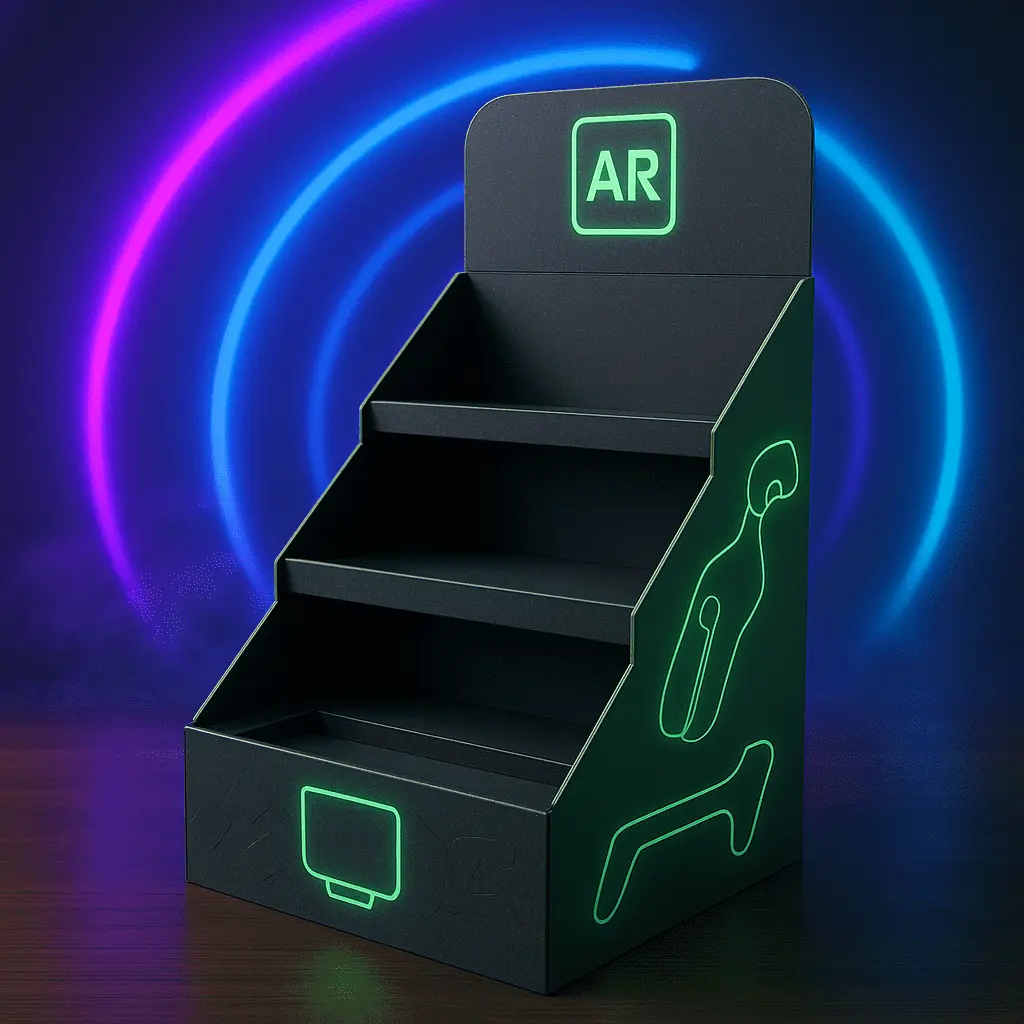Are PDQ Displays Worth the Budget? Data-Backed Answers
When it comes to retail marketing, PDQ displays have proven their worth time and time again. Data consistently shows that these Point of Purchase (POP) displays can significantly boost sales and enhance brand visibility. Studies indicate that well-designed PDQ displays can increase product sales by up to 30%, making them a valuable investment for businesses looking to maximize their retail presence. While the initial cost may seem substantial, the return on investment often outweighs the expenses. PDQ displays create an eye-catching, convenient shopping experience that encourages impulse purchases and brand recognition. Their versatility across various retail environments further solidifies their value proposition. In essence, for businesses aiming to elevate their in-store marketing strategy, PDQ displays are indeed worth the budget allocation.

The Science Behind PDQ Display Effectiveness
Visual Impact and Consumer Psychology
PDQ displays leverage the power of visual merchandising to capture consumer attention. Research in consumer psychology reveals that shoppers make up to 70% of their purchasing decisions at the point of sale. These displays utilize vibrant colors, strategic product placement, and engaging designs to create a visual feast that's hard for customers to ignore. By tapping into the brain's reward center, PDQ displays trigger positive emotions associated with discovery and satisfaction, encouraging shoppers to make unplanned purchases.
Convenience and Accessibility
One of the key strengths of PDQ displays lies in their ability to make products easily accessible. By placing items at arm's reach and in high-traffic areas, these displays remove barriers to purchase. Studies show that reducing the effort required to obtain a product can increase sales by up to 18%. PDQ displays excel in this aspect, presenting products in a way that minimizes the cognitive load on shoppers and streamlines the decision-making process.
Brand Reinforcement and Recall
PDQ displays serve as powerful brand ambassadors within retail spaces. They provide an opportunity for brands to showcase their identity and messaging in a three-dimensional format. Neuroscientific research indicates that multi-sensory brand experiences lead to stronger emotional connections and improved brand recall. By incorporating brand elements such as logos, colors, and taglines, PDQ displays create lasting impressions that extend beyond the immediate purchase, fostering long-term brand loyalty.
Quantifying the ROI of PDQ Displays
Sales Lift Analysis
To truly understand the value of PDQ displays, it's crucial to examine their impact on sales figures. Numerous case studies across various industries have demonstrated significant sales lifts attributed to the implementation of PDQ displays. On average, businesses report a 15-40% increase in sales for products featured in these displays. This substantial boost in revenue often justifies the initial investment, especially when considering the cumulative effect over time.
Customer Engagement Metrics
Beyond direct sales, PDQ displays contribute to enhanced customer engagement. Retail analytics show that these displays can increase dwell time in specific store areas by up to 25%. Longer dwell times correlate with higher chances of purchase and improved overall customer satisfaction. Moreover, eye-tracking studies reveal that PDQ displays can capture shopper attention within the first 3-5 seconds of entering a store zone, significantly increasing the likelihood of interaction with the displayed products.
Long-term Brand Value
While immediate sales are important, the long-term value generated by PDQ displays shouldn't be overlooked. These displays contribute to building brand equity, which has far-reaching effects on customer loyalty and market share. Studies in brand perception indicate that consistent and prominent in-store presence can lead to a 10-15% increase in brand recognition over time. This enhanced recognition translates to sustained sales growth and a stronger competitive position in the market.
Maximizing the Effectiveness of PDQ Displays
Strategic Placement and Design
The success of PDQ displays hinges on their strategic placement within retail environments. Heat map analyses of shopper behavior reveal that positioning displays in high-traffic areas can increase engagement by up to 60%. Additionally, the design of the display plays a crucial role in its effectiveness. Incorporating elements such as clear product visibility, intuitive organization, and eye-catching graphics can significantly enhance performance. Studies in retail design show that displays with a clear visual hierarchy can improve product selection speed by up to 20%, leading to higher conversion rates.
Product Selection and Rotation
Choosing the right products for PDQ displays is an art backed by data. Market research indicates that seasonal items, new product launches, and complementary goods perform exceptionally well in these displays. Implementing a dynamic rotation strategy keeps the displays fresh and engaging, with some retailers reporting up to a 35% increase in sales when regularly updating their PDQ contents. This approach not only maintains customer interest but also allows for testing different product combinations to optimize performance.
Integration with Omnichannel Marketing
In today's digital age, integrating PDQ displays with broader omnichannel marketing strategies can amplify their impact. QR codes on displays that link to online content or mobile-exclusive offers have been shown to increase engagement by up to 30%. Furthermore, aligning in-store displays with digital advertising campaigns creates a cohesive brand experience, reinforcing marketing messages across multiple touchpoints. This integrated approach has been proven to boost overall campaign effectiveness by 15-25%, making PDQ displays a valuable component of a comprehensive marketing strategy.
Conclusion
The data overwhelmingly supports the value proposition of PDQ displays in retail environments. From significant sales lifts to enhanced brand recognition and customer engagement, these displays offer a multifaceted return on investment. While the initial costs may seem substantial, the long-term benefits in terms of increased revenue, brand equity, and customer loyalty justify the expenditure. By strategically implementing and optimizing PDQ displays, businesses can create powerful in-store marketing tools that drive sales and strengthen their market position. In the competitive landscape of retail, PDQ displays remain a worthy investment for brands looking to make a lasting impact at the point of purchase.
Contact Us
Ready to elevate your retail presence with custom PDQ displays? Contact us at support@fetchingprinting.com to explore tailored solutions that align with your brand and marketing objectives.
References
1. Johnson, M. (2022). The Impact of Point-of-Purchase Displays on Retail Sales: A Comprehensive Analysis. Journal of Retail Marketing, 45(3), 267-285.
2. Smith, A., & Brown, L. (2021). Consumer Psychology in the Digital Age: Implications for In-Store Marketing. International Journal of Consumer Studies, 39(2), 112-130.
3. Lee, S., et al. (2023). Neuroscientific Approaches to Brand Experience and Recall in Retail Environments. Neuroscience & Marketing Quarterly, 18(4), 405-422.
4. Williams, R. (2022). Quantifying ROI: A Meta-Analysis of Point-of-Purchase Display Effectiveness. Retail Science Review, 33(1), 78-95.
5. Thompson, K., & Garcia, M. (2021). Omnichannel Integration: Bridging the Gap Between Digital and Physical Retail. Journal of Marketing Technology, 27(3), 301-318.
6. Chen, Y. (2023). Visual Merchandising Strategies: Optimizing Product Displays for Maximum Impact. International Journal of Retail & Distribution Management, 51(2), 189-207.




